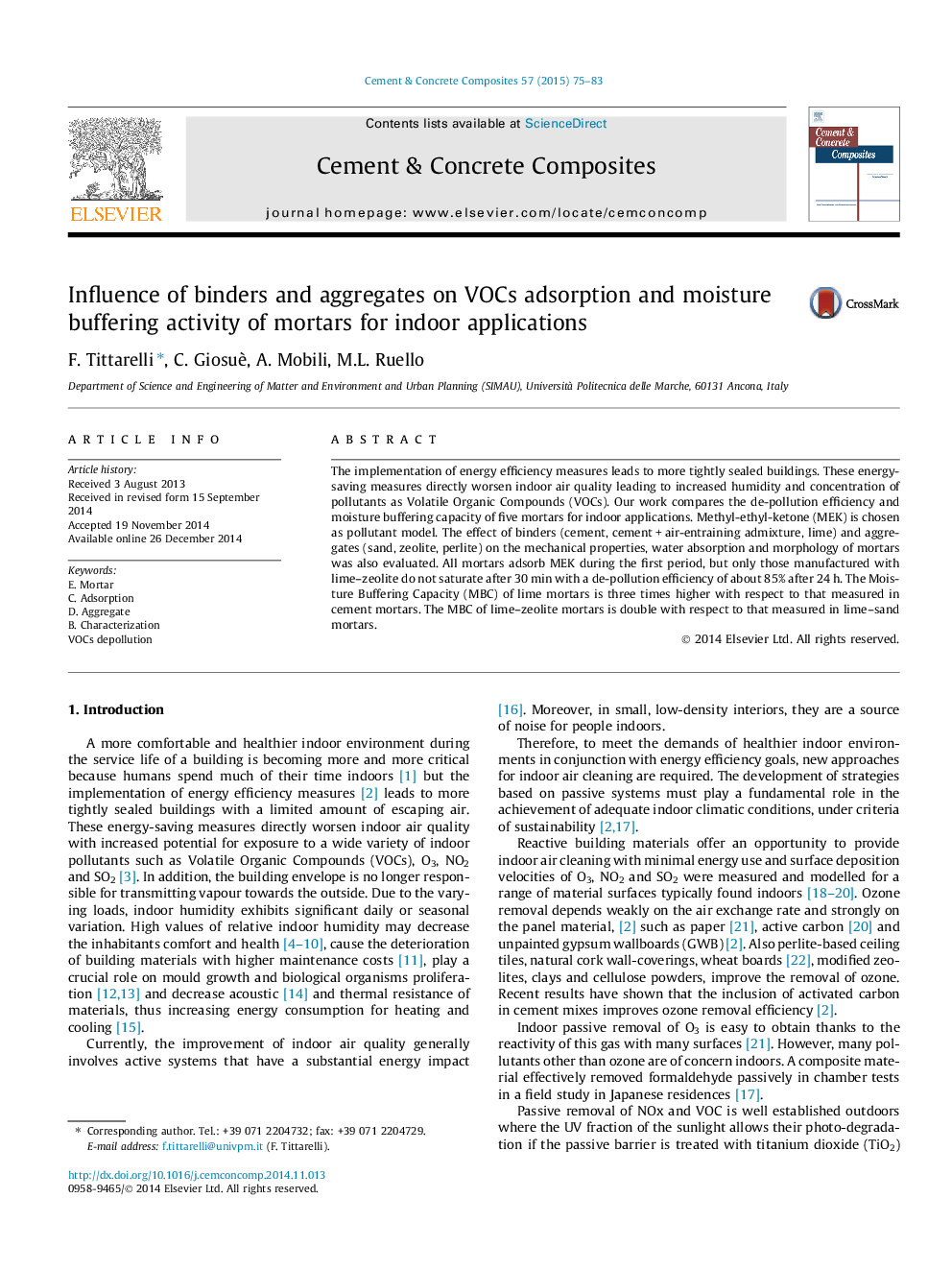| Article ID | Journal | Published Year | Pages | File Type |
|---|---|---|---|---|
| 1454630 | Cement and Concrete Composites | 2015 | 9 Pages |
The implementation of energy efficiency measures leads to more tightly sealed buildings. These energy-saving measures directly worsen indoor air quality leading to increased humidity and concentration of pollutants as Volatile Organic Compounds (VOCs). Our work compares the de-pollution efficiency and moisture buffering capacity of five mortars for indoor applications. Methyl-ethyl-ketone (MEK) is chosen as pollutant model. The effect of binders (cement, cement + air-entraining admixture, lime) and aggregates (sand, zeolite, perlite) on the mechanical properties, water absorption and morphology of mortars was also evaluated. All mortars adsorb MEK during the first period, but only those manufactured with lime–zeolite do not saturate after 30 min with a de-pollution efficiency of about 85% after 24 h. The Moisture Buffering Capacity (MBC) of lime mortars is three times higher with respect to that measured in cement mortars. The MBC of lime–zeolite mortars is double with respect to that measured in lime–sand mortars.
